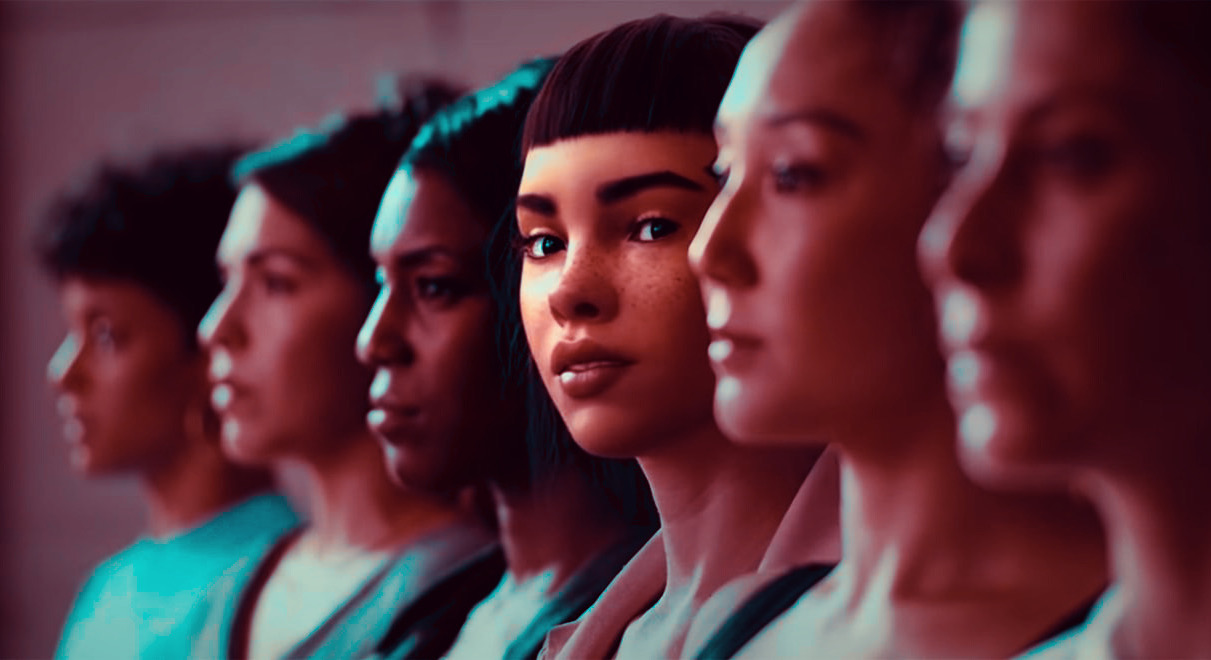Ronald McDonald, Homer Simpson, and Barbie. Three of the most influential people to never live. For the past 60 years, these “beings” have made an impact in every household across the US and abroad. How? Because an idea, a manufactured personality, and an image are all it takes to create a “person” that others can love and identify with – especially in the digital age.
This is why it should come as no surprise that digital humans are gaining massive influence.
If you’re unfamiliar, digital humans are virtual people designed to exist entirely on digital platforms. As opposed to their cartoon character predecessors, digital humans use social media to show that they live life just like the rest of us. Their employment ranges from customer service representative to media mogul. And many of them represent an idea greater than themselves, such as equality.
Ever since mid-2018 when we wrote Everything You Need to Know About Digital Humans, we’ve championed their massive potential. Honestly, who wouldn’t after seeing the success of Lil Miquela – the Kim Kardashian of digital humans.
Just a few of the prominent points on Lil Miquela’s resumé thus far:
- Partnered with: Calvin Klein, UGG, Prada, Spotify, Samsung, Universal Studios, Supreme, and many more…
- Raised more than $20 million of investment money
- Modeled for Vogue
- Launched a music career with 400,000 monthly listeners
- Directed a documentary short, RobotProblems
- Arts Editor at Dazed
- Launched a clothing line, Club 404
There aren’t many influencers, let alone people, with a resumé that can rival Lil Miquela’s.
Mind you, this is Lil Miquela at 3 years old. Imagine Lil Miquela at 21 years old. What will she have accomplished? Will she have run for political office? How many Hollywood Blockbusters will she have starred in? What type of influence will she have accumulated?
Digital Human Explosion
Lil Miquela isn’t paving this path alone. Shudu is another prominent digital human that has made huge waves in fashion. The Cardiac Coach is a digital human caregiver that helps people improve their health. All of these digital humans are laying the groundwork for this entirely new “being”. They’re the nucleus, the guinea pigs, the foundation on which millions of digital humans will be created.
In 2007, when there were just 1.4 million iPhones in existence, businesses weren’t putting much emphasis on building apps for that platform. But just five years later, in 2012, when there were more than 271 million iPhones sold, every single company wanted an app.
Similarly, businesses aren’t lining up to create digital humans. At most, there might be 1,000 digital humans in existence. But in five years, there will be more than a million digital humans. Every company will be thinking about how they can take advantage of the opportunity.
When there are millions of digital humans speaking on people’s behalf, operating media brands, creating music, modeling, acting as digital receptionists, spreading healthcare advice, etc. we want to make sure that there’s a set of rules or laws to prevent chaos.
Ethical Digital Human Design
UneeQ, one of the premiere designers of digital humans, has put into motion The Five Laws for Ethical Digital Human Design. It’s a foundational framework for digital humanity. With prominent themes such as Respect, Inclusivity, and Originality, these Five Laws are a great start to creating a common understanding of how to integrate digital humans into our world.
Five years ago, I remember watching the sci-fi film Her where Joaquin Phoenix’s character becomes fascinated with a digital human and that fascination eventually evolved into a relationship.
Five years from now, when there are millions of digital humans accessible to us all we’ll be glad that we created a strong foundation, a stable nucleus on which the digital human existence can accumulate.
The Five Laws for Ethical Digital Human Design is not only a novel idea, it’s a necessary idea. It’s how we limit any sort of pandemonium from occurring out of the grand opportunity that is digital humanity.
